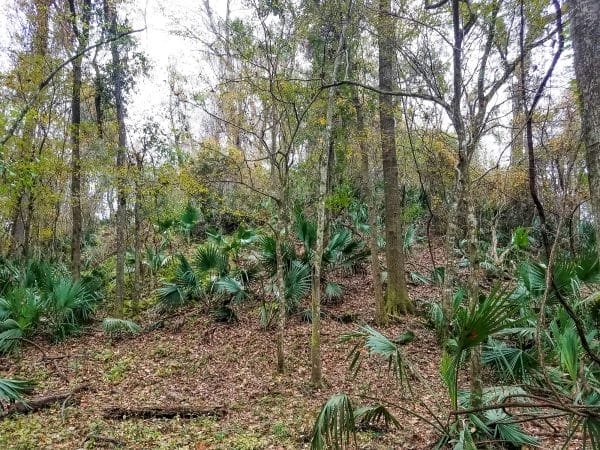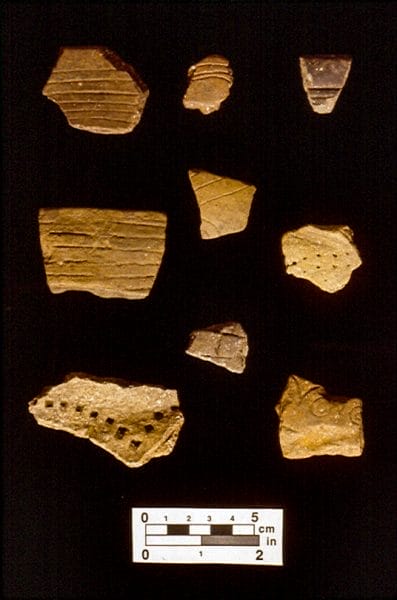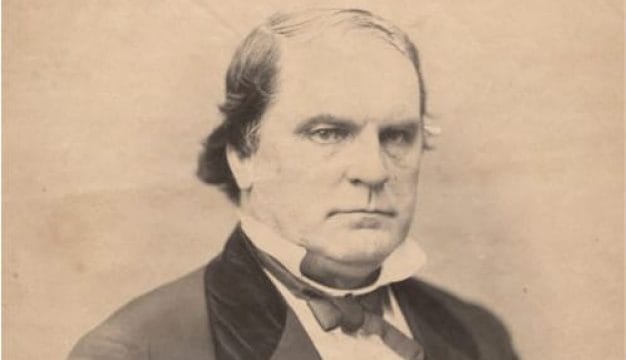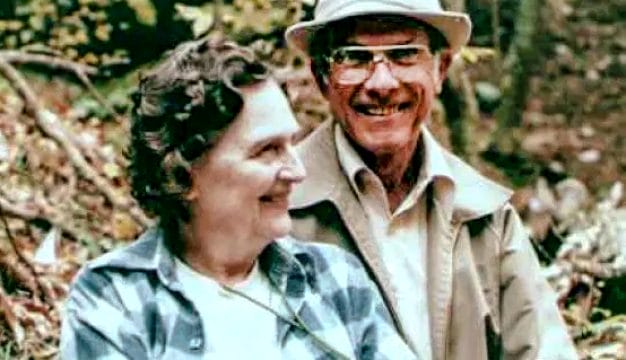Bottle Creek Site
 Bottle Creek Site
Bottle Creek is one of the most important prehistoric Native American sites in Alabama, second only to Moundville. Located on Mound Island, in Baldwin County in the heart of the Mobile-Tensaw Delta, it is the largest mound complex on the northern Gulf Coastal Plain. Bottle Creek was occupied from about 1250 and probably served as the principal political and religious center for what is now called Pensacola culture for the three centuries prior to European contact. Bottle Creek continued to be an important site for local Indians, such as the Mobilians, well into the eighteenth century, and French explorer and founder of Mobile Jean-Baptiste Le Moyne de Bienville, is believed to have visited the site in 1702. Now owned by the state of Alabama, Bottle Creek was declared a National Historic Landmark on March 10, 1995, joining Moundville Archaeological Park as the only other Native American site so recognized in the state of Alabama. It is administered by the Alabama Historical Commission.
Bottle Creek Site
Bottle Creek is one of the most important prehistoric Native American sites in Alabama, second only to Moundville. Located on Mound Island, in Baldwin County in the heart of the Mobile-Tensaw Delta, it is the largest mound complex on the northern Gulf Coastal Plain. Bottle Creek was occupied from about 1250 and probably served as the principal political and religious center for what is now called Pensacola culture for the three centuries prior to European contact. Bottle Creek continued to be an important site for local Indians, such as the Mobilians, well into the eighteenth century, and French explorer and founder of Mobile Jean-Baptiste Le Moyne de Bienville, is believed to have visited the site in 1702. Now owned by the state of Alabama, Bottle Creek was declared a National Historic Landmark on March 10, 1995, joining Moundville Archaeological Park as the only other Native American site so recognized in the state of Alabama. It is administered by the Alabama Historical Commission.
 Bottle Creek Mound A
The people of the Pensacola culture were culturally related to the peoples of the geographically expansive Mississippian period, which characterized a large portion of the Southeast starting in about 1000. Archaeological evidence, including characteristic shell-tempered pottery, indicates that the Pensacola culture stretched along the coast from Choctawhatchee Bay in western Florida to the eastern side of the Mississippi River Delta in Louisiana. The largest concentration of Pensacola villages and artifacts occurred along Mobile Bay in the Mobile-Tensaw Delta, and in the southern portions of the Tombigbee and Alabama River valleys.
Bottle Creek Mound A
The people of the Pensacola culture were culturally related to the peoples of the geographically expansive Mississippian period, which characterized a large portion of the Southeast starting in about 1000. Archaeological evidence, including characteristic shell-tempered pottery, indicates that the Pensacola culture stretched along the coast from Choctawhatchee Bay in western Florida to the eastern side of the Mississippi River Delta in Louisiana. The largest concentration of Pensacola villages and artifacts occurred along Mobile Bay in the Mobile-Tensaw Delta, and in the southern portions of the Tombigbee and Alabama River valleys.
Recent archaeological research at the Bottle Creek site shows that the people of the Pensacola culture probably moved into the area from the north and west. Early artifacts indicate that the people living at Bottle Creek and other Gulf Coast sites were in close contact with Moundville peoples along the Black Warrior River. There is also evidence of some interaction with people of the Plaquemine culture (a variant of the Mississippian culture) of the Lower Mississippi Valley.
The Bottle Creek site contains more than 18 mounds, the tallest rising approximately 16 meters (52 feet) above the swamp. Although the site has been known for three centuries, its physical isolation has kept it relatively undisturbed. Until fairly recently, little was known about the site or its inhabitants, other than clear evidence that the occupants of Bottle Creek likely controlled, or at least influenced, the activities of a great many people along the northern Gulf Coast.
In 1991, the Alabama Museum of Natural History established the Gulf Coast Survey to conduct excavations at the Bottle Creek site. The project’s principal goals were to explore the history of the site and the changing cultural lives of its inhabitants. Initial excavations in prehistoric garbage dumps revealed fragments of pottery, shell, and stone tools as well as many animal bones, which tell scientists what people were eating.
 Shell-tempered Pottery
Researchers conducted these excavations to determine what kind of social structure governed the lives of the Bottle Creek inhabitants and what changes took place in their culture during the centuries that the site was occupied. By examining artifacts recovered from various periods in the site’s history, archaeologists can catalog the changes in design, material, manufacturing techniques, and other characteristics. For example, researchers have found that the ruling classes lived on top of Mound A and that although they ate the same kinds of foods as the lower classes, the quality of their food was better. They had finer cuts of meat (as shown by the kinds of bones recovered) and ample amounts of corn, and they even ate larger shellfish. The pottery recovered from the site also tells us about the social structure at Bottle Creek. The people who lived on the small house mounds surrounding Mound A used the same kinds of pottery as the nobles, but they seem to have had many more cooking jars than serving bowls and plates.
Shell-tempered Pottery
Researchers conducted these excavations to determine what kind of social structure governed the lives of the Bottle Creek inhabitants and what changes took place in their culture during the centuries that the site was occupied. By examining artifacts recovered from various periods in the site’s history, archaeologists can catalog the changes in design, material, manufacturing techniques, and other characteristics. For example, researchers have found that the ruling classes lived on top of Mound A and that although they ate the same kinds of foods as the lower classes, the quality of their food was better. They had finer cuts of meat (as shown by the kinds of bones recovered) and ample amounts of corn, and they even ate larger shellfish. The pottery recovered from the site also tells us about the social structure at Bottle Creek. The people who lived on the small house mounds surrounding Mound A used the same kinds of pottery as the nobles, but they seem to have had many more cooking jars than serving bowls and plates.
One of the most intriguing structures at Bottle Creek is Mound L, an unusual formation on the southern end of the site. Excavations in 1991 revealed that the mound held at least two buildings on its summit during the last stages of construction, which probably took place from the late sixteenth century through the early eighteenth century. Hundreds of post holes indicate that there were many buildings atop the mound. Unfortunately, there is little evidence of their functions.
Additional excavations were conducted at the large, rounded terrace that projects off the northeast end of Mound B. A test trench, dug in 1994, showed quite clearly that there was a considerable degree of engineering involved in the construction of Mound B and the terrace. Clearly, the inhabitants of Bottle Creek were remarkably sophisticated when it came to moving earth. Bottle Creek was probably a major religious center throughout much of its history. It is possible that, given the number of burial mounds found at the outer edges of the settlement, it eventually became a mortuary center in the manner of Moundville. But why did this remote location in the center of a swamp attract its ancient inhabitants? The answer to this question perhaps lies beyond the realm of archaeology.
Further Reading
- Bense, Judith. Archaeology of the Southeastern United States: Paleo-Indian to World War I. San Diego: Academic Press, 1994.
- Brown, Ian W., ed. Bottle Creek, A Pensacola Culture Site in South Alabama. Tuscaloosa: University of Alabama Press, 2003.
- Fuller, Richard S., and Ian W. Brown, eds. The Mound Island Project: An Archaeological Survey in the Mobile-Tensaw Delta. Bulletin of the Alabama Museum of Natural History No. 19. Tuscaloosa: University of Alabama, 1998.



